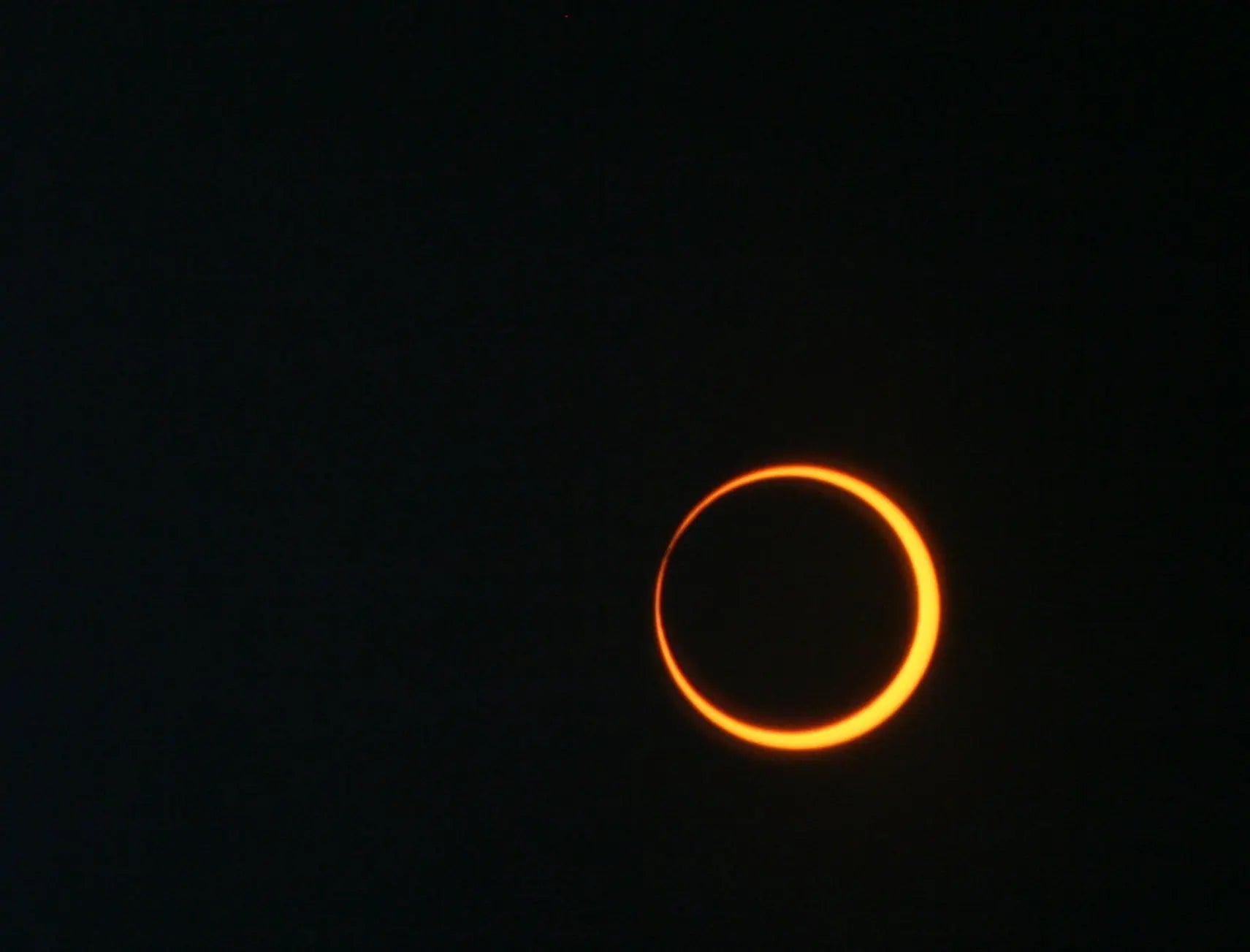An annular eclipse and a total eclipse are two different celestial events that occur during a solar eclipse. During a solar eclipse, the Moon comes between the Earth and the Sun, blocking the Sun's light from reaching certain parts of the Earth's surface.
In a total eclipse, the apparent size of the Moon completely covers the Sun, creating a moment of complete darkness known as totality. This happens because the Moon is at a point in its orbit where it is closest to the Earth, making its apparent size just large enough to obscure the entire solar disk. As a result, the Sun's outer atmosphere, called the corona, becomes visible as a bright halo around the darkened Moon.
On the other hand, an annular eclipse occurs when the Moon is near its apogee, the farthest point from the Earth. In this situation, the Moon appears smaller than the Sun when they align, and the Sun's outer edges remain visible, creating a "ring of fire" effect around the Moon. During an annular eclipse, there is no totality, and the Sun is not completely blocked, leaving a bright ring-like appearance around the darkened Moon.
In summary, the main difference between an annular eclipse and a total eclipse lies in the apparent size of the Moon during the alignment: total eclipses occur when the Moon fully covers the Sun, while annular eclipses happen when the Moon appears smaller, leaving a ring-like shape of the Sun visible.
So which one do you need ISO certified eclipse glasses for? Well, it kind of depends. During an annular eclipse, because the Sun is never fully obscured by the Moon, you need to wear eclipse glasses for the entire 2ish hours during which the eclipse is eclipsing.
However, during a Total eclipse, you are able to remove your eclipse glasses during totality, which lasts for around 7.5 minutes. After totality, you must put them back on to view the ending of the eclipse.



Share:
FOX13's The Place - Are you ready to watch the last Western U.S. solar eclipse for 20 years?
Is It Safe to Use My Eclipse Glasses from the August 2017 Eclipse?